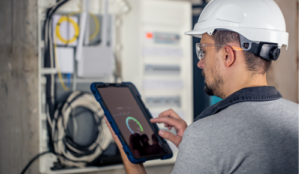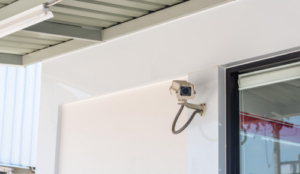All electronics deteriorate over time, especially those that are in use for long periods of time. That’s why it’s extremely important to have frequent periodic inspections – be it in a residential home, commercial space, or industrial facility.
Periodic electric inspections play a huge role in identifying potential hazards, preventing electrical failures, and maintaining a safe environment for yourself, tenants or employees. In this article, we will explore the importance of periodic electrical inspections and answer how often they are required.
What are periodic electrical inspections?
Electrical inspections are regular checks of all electrical systems within a building. It is a detailed report of the system, its components and any wiring, completed by a professional electrician. The aim of the report is to ensure the safety, compliance, and proper functionality of electrics, in order to prevent accidents, ensure the safety of the electrical infrastructure, and maintain compliance.
The importance of periodic electrical inspections
Periodic electrical inspections are essential in all properties. Electrical systems can deteriorate over time because of age, environmental conditions or overloading.
Faulty electrics are incredibly dangerous. In fact, according to Dorset & Wiltshire Fire and Rescue, around 7,000 house fires in the UK are caused by faulty electrics, appliances, wiring and overloaded sockets every year.
Electrical inspections, if done regularly, can help identify any wear and tear, corrosion, or damage to electrical components that may compromise the system’s integrity.
Regular inspections also ensure compliance with safety standards and regulations. Following these rules is not only a legal requirement but also crucial to help prevent electrical fires. Once an inspection has been completed, you will receive an Electrical Condition Report that proves the results of your test.
Determining the frequency of inspections
The frequency of your electrical inspections depends on several different factors, including the type of property, its usage, and any local regulations.
Residential properties
Residential properties, for example, should be inspected and tested at least every 10 years. However, if you notice any potential electrical issues, such as flickering lights, outlets that are warm to the touch or circuits that trip frequently, you should schedule an inspection as soon as possible.
You should also get an inspection before selling your property, and before buying a home that was previously occupied – even if you know when the last report was conducted.
Rental properties
Rental properties need to be tested more frequently – every five years. With a high turnover of tenants, rental properties experience more diverse and potentially demanding use of electrical systems, and could cause wear and tear to happen faster. As well as this, rental properties are quite often older buildings, and may have ageing electrical systems that require more monitoring.
The legal responsibilities placed on landlords and property managers to ensure tenant safety are the main reasons for the need for regular inspections. Landlords should also undertake an electrical inspection when their property is being prepared for letting, so that there are no issues or concerns once the tenants move in.
Commercial properties
Most of the time, commercial buildings have higher electrical demands than residential properties, and so we recommend that inspections are completed at least every five years.
This being said, the type of business and the equipment used can influence the frequency of the inspection. For example, a restaurant with heavy electrical appliances may need to have inspections more often than an office space.
Industrial facilities
Industrial facilities often come with complex electrical systems and heavy machinery. This means that they are more likely to require short periods between electrical inspections – potentially every three to five years.
High-risk industries, such as manufacturing or chemical processing, may need even more frequent inspections to ensure the highest level of safety.
Special circumstances
Of course, as with everything, specific events may warrant special circumstances and unscheduled inspections. These events include major renovations or severe weather conditions that could impact the electrical infrastructure.
What happens after the test?
The electrician will generate a detailed inspection report outlining the results of the tests, observations, and any issues identified during the examination. This report serves as a comprehensive document that highlights the condition of the electrical installation.
If nothing dangerous was found, then nothing needs to happen until the next inspection. However, if any issues were found, they are usually split into different categories, depending on their urgency. These different classes are often labelled C1, C2, C3, and FI:
- C1: Requires immediate attention, as it poses a risk of injury or fire.
- C2: Requires improvement, as it may become a risk in the future.
- C3: Improvement is recommended but is not urgent.
- FI: Further investigation required.
If any C1 or C2 issues are found during the test, these need to be repaired, replaced, or upgraded straight away to ensure compliance with safety standards. If any C2, C3, or FI issues are found, the property owner or manager will schedule work to fix the problems. This could include fixing faulty wiring, replacing damaged components, or upgrading the electrical system to meet current standards.
In some cases, a follow-up inspection may be required, especially if significant work has been carried out. The follow-up ensures that the necessary corrections have been made and that the electrical installation now meets safety standards.
How Dependable can help
Dependable have over 20 years of experience in electrical testing, and our dedicated, flexible approach to work means we’ll always be ready to help with scheduled electrical testing or resolve your electrical problems.
Contact us today to see how we can help you.




